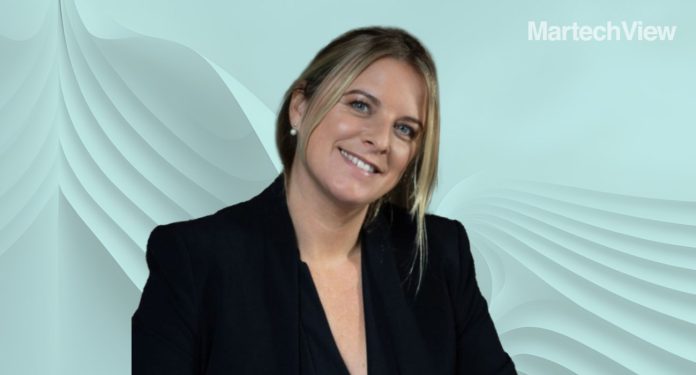Deborah Knight on the future of CX: adaptive experiences, human connection, and intentional design for 2025. Discover how to truly listen and measure impact.
What does a truly modern customer experience look like in a time when customer expectations are evolving faster than ever? According to Deborah Knight, Customer Success and experience Consultant and founder at Kaptive CX, it’s not just about adopting new tools or collecting more feedback—it’s about intentional design, human connection, and the ability to act with clarity and speed.
Knight shares her perspective in this interview on how organizations can stay truly connected to their customers by listening deeply, embedding empathy into systems and journeys, and empowering people to act where it matters most. She also offers practical insights into operationalizing CX strategy—from turning feedback into action to measuring ROI that resonates from the frontline to the boardroom.
If you’re looking to move beyond CX theory and drive customer-led growth in a way that’s measurable, scalable, and grounded in what your customers need, this is a must-read.
Full interview;
You’ve led CX transformations across industries. What will a “modern” customer experience look like in 2025?
In 2025, a modern customer experience is adaptive, human-led, and intentionally focused on the moments that matter. Customers want ease, speed, and relevance. They expect seamless self-service when it suits them, fast, human support when they hit friction, and proactive guidance to help them unlock full value. It’s no longer about delivering the same experience to everyone. It’s about meeting each customer where they are—emotionally and functionally—and doing so without delay or complexity.
With customer expectations shifting rapidly, how should brands evolve their listening strategies to stay truly connected?
Many businesses think they’re listening—but they’re just collecting data. Surveys, reviews, and dashboards can give the illusion of insight, but genuine connection comes from depth, not volume. Listening isn’t just about asking for feedback. It’s about observing behavior, noticing silence, and spotting where customers work around you, not with you.
One of the biggest red flags is ignoring your customer-facing teams. Your ears and eyes bring real-time signals long before you gather a statistically significant data set. If your teams are raising the same issues repeatedly, your customers are feeling it, too.
Brands can shift from passive data collection to active listening by:
- Looking beyond words: Analyzing behavior, usage, and disengagement as critical signals.
- Uncovering unspoken needs: Spotting friction that customers aren’t flagging, but are quietly working around.
- Challenging bias: Are you genuinely open to hearing what disrupts your plans, not just supporting them?
- Empowering internal voices: Treat frontline feedback as a source of early, invaluable insight, not noise to filter out.
True listening means acting on what you hear – even when it’s inconvenient.
You often talk about empathy in CX. How can organizations scale empathy without losing authenticity, especially as AI takes a front seat?
Empathy isn’t just about being nice. It’s about understanding what your customer is trying to achieve and designing your business to support them. It’s only authentic when teams are empowered to act on what they know about the customer, not just in a live chat or call, but across the entire journey.
To scale empathy, businesses must stop thinking it only happens in one-to-one interactions. It should be embedded into systems, journeys, and decision-making. That means consistently asking: What might our customer be thinking, feeling, or experiencing now? And building around that, not around internal processes.
AI can play a role in scaling empathy, but only when trained with the right intent. It must recognize nuance, emotion, and context, not just keywords and workflows. If used well, it can remove friction and surface insight, so humans have more time and space to be human, which matters most.
Can you walk us through your CX framework at Kaptive CX—how do you help clients operationalise experience insights into action?
We focus on three key levers: Customer Offer, People, and Processes.
- Customer Offer: We examine what’s being promised—products, pricing, service experience—and whether it aligns with customer expectations.
- People: We examine whether the right people, with the right skills, are focused on the right customer interactions, especially the ones that build loyalty and provide value.
- Processes: We assess whether systems, workflows, and tools enable teams to listen, act, and learn efficiently.
Our strength is helping businesses move from insight to action by making their internal capabilities customer-ready. We bring a clear strategy to life at every level of your organisation to bring clarity, momentum, and repeatability.
What tools or platforms are you seeing as most impactful in closing the loop between customer feedback and business decisions?
Some excellent tools are available today, but too often, businesses get overwhelmed by choice or fall into the trap of chasing features rather than outcomes. The real issue isn’t the lack of tools, it’s the lack of clarity. Many organizations only scratch the surface of a platform’s potential because they haven’t clearly defined what they’re trying to achieve or how feedback will drive change.
The starting point isn’t the tool; it’s understanding your blind spots. Where are you missing insight? What feedback is hard to interpret or act on? For some, the gap might be a lack of structured tagging in online chat. For others, it’s a CRM that doesn’t allow account teams to capture and escalate nuanced feedback. You’ll know it’s an issue when frontline teams say, “This complaint doesn’t fit into our categories.”
Businesses need absolute purpose, ownership, accountability, and clarity to make tools truly impactful. What are you trying to learn? Who’s responsible for turning that insight into action? Without that, even the most sophisticated tool will fail to deliver outcomes.
The most effective platforms integrate seamlessly into workflows, adapt to business models, and empower teams to act in real time. But they should never be seen as a shortcut or cost-saving exercise—they are an investment in smarter, more agile support that helps close the gap between what customers say and what the business does.
How do you help clients measure the ROI of CX initiatives in a way that is accessible to both the C-suite and frontline teams?
CX teams must become fluent in commercial metrics. For the C-suite, this means developing a business case for how specific initiatives are expected to drive improved retention, higher customer lifetime value (LTV), or reduced service cost, and then tracking progress against that plan. For frontline teams, the focus shifts to metrics like reduced effort, faster resolution, and tangible success stories.
These are evolving metrics compared to what we’ve seen in the past. With increased investment in CX and greater scrutiny on cost versus revenue centres, we must speak the language of the business and measure intentionally. Any investment needs to be tied to a financial metric. If it can’t be measured, you risk losing budget and support.
Our approach is to build a shared understanding of what “good” looks like for our clients, and then connect that to commercial impact using a blend of measurable metrics and compelling stories.
What excites you most about the future of customer success, and where do you see the most significant opportunities for innovation?
What excites me most is that customer success is finally recognized as a strategic growth engine, not just a helpful post-sale support arm. More businesses are waking up to the fact that great experiences don’t just “feel good,” they drive commercial outcomes. When done well, they make people stay, spend, and succeed.
The most significant opportunity now lies in being intentional with the experiences we design, the tools we deploy, and the promises we make to customers. That starts by thinking strategically and from the customer’s perspective, not just through a business lens.
A key part of this shift is clear ownership. Too often, CX is pushed into support or left floating under the mantra that “everyone owns the experience.” In reality, we need someone to lead the charge. Someone who defines the experience and what it needs to deliver, and holds the business accountable for staying aligned and customer-focused.
We’ve never had more tools at our disposal, but technology only drives innovation if used with purpose. The real progress comes when we stop over-engineering journeys and instead focus on building meaningful connections, simplifying where it matters, and delivering on our promises. That’s where customer-led growth becomes unstoppable.










